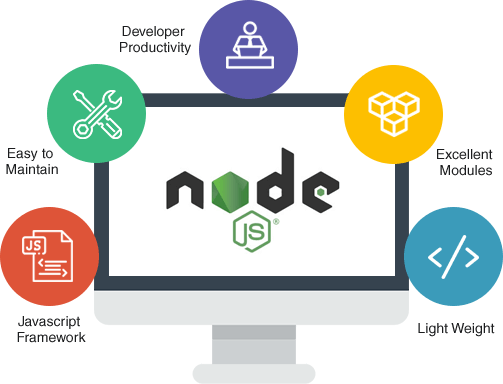Tech Versum: Explore the Future of Technology
Dive into the latest trends and innovations in technology with Tech Versum.
Node.js: The Perfect Recipe for Scalable Applications
Discover how Node.js can transform your application development with perfect scalability! Unlock the secrets to building robust apps today!
Understanding Asynchronous Programming in Node.js: Key to Scalability
Asynchronous programming is a pivotal feature in Node.js that allows developers to build scalable applications without blocking the event loop. In traditional synchronous programming, each operation must complete before the next one begins, leading to delays, especially in I/O-bound tasks. In contrast, Node.js employs a non-blocking, event-driven architecture where operations can be initiated and executed concurrently. This means that while the server handles a request, it can continue to process additional requests, optimizing resource usage and significantly enhancing performance.
To fully grasp the benefits of asynchronous programming in Node.js, it's vital to understand the core constructs used to manage asynchronous operations, such as callbacks, promises, and async/await. Callbacks facilitate the execution of code after a task completes, while promises offer a more manageable way to handle asynchronous operations with method chaining. The evolution of async/await syntax further simplifies asynchronous code, making it more readable and easier to debug. By mastering these concepts, developers can effectively harness Node.js’s capabilities to build high-performance, scalable applications that can handle numerous simultaneous connections with ease.

How Node.js Handles Multiple Requests: Exploring Event-Driven Architecture
Node.js is renowned for its ability to handle multiple requests efficiently, thanks to its unique event-driven architecture. Unlike traditional server frameworks that create a new thread or process for each incoming request, Node.js operates on a single-threaded model using non-blocking I/O calls. This design allows the server to process requests asynchronously, meaning it can handle numerous connections simultaneously without waiting for each request to complete. By employing an event loop, Node.js can manage multiple operations and respond to user interactions in real-time, demonstrating exceptional performance under high loads.
The power of Node.js lies in its capacity to utilize callbacks, promises, and async/await syntax, which further enhances its event-driven architecture. When a request is received, instead of being processed sequentially, the request is passed off to the event loop while the server continues to listen for additional requests. Once the I/O operation completes, Node.js executes the relevant callback function, allowing the application to remain responsive. This mechanism not only improves the performance of applications but also simplifies the development process by allowing developers to write cleaner and more manageable code. As a result, businesses are turning to Node.js for building scalable applications that can effectively manage high traffic levels.
Top 5 Frameworks to Enhance Your Node.js Application Scalability
When it comes to enhancing the scalability of your Node.js applications, leveraging the right frameworks can make a significant difference. Among the various options available, frameworks like Express.js and Fastify stand out due to their flexibility and performance. Express.js is known for its minimalistic approach, allowing developers to structure their applications in an organized manner, while Fastify focuses on speed and efficiency, making it an excellent choice for high-performance applications. These frameworks help manage increased traffic loads and maintain application responsiveness during peak times.
In addition to those, other notable frameworks include NestJS, Socket.io, and Koa.js. NestJS integrates well with modern development practices, promoting scalability through modular architecture, while Socket.io provides a powerful solution for real-time applications, enhancing user engagement with efficient socket management. Lastly, Koa.js, developed by the creators of Express, offers a lighter and more expressive foundation that can help developers create robust applications that scale seamlessly under heavy use. Choosing the right framework is essential for ensuring that your Node.js application can grow alongside your user base.